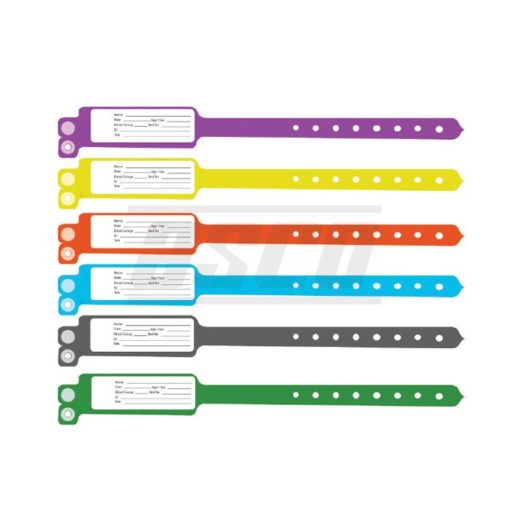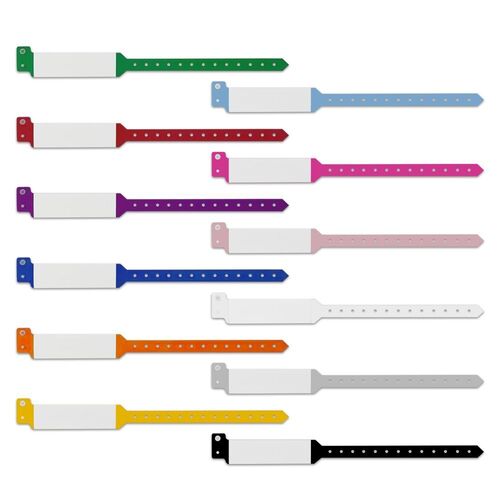A Comprehensive Guide to the Various Types of Patient Identification Band
A Comprehensive Guide to the Various Types of Patient Identification Band
Blog Article
Discovering the Different Sorts Of Patient Identification Band Made Use Of in Medical Facilities
In the elaborate globe of healthcare, the important role of Patient Identification bands usually goes undetected. These bands, varying from simple paper wristbands to sophisticated RFID bands, form the foundation of Patient safety procedures, guaranteeing accuracy in Patient Identification. The vast variety of these bands, each with its unique benefits and restrictions, is usually ignored. As we browse with this subject, one might acquire insight right into the subtle intricacies and important significance of such bands in medical centers.
Understanding the Importance of Patient Identification Bands
While they may appear like plain accessories, Patient Identification bands play a vital function in medical centers. These bands offer as an important tool for confirming Patient identity, avoiding medical mistakes connected to misidentification. Patient Identification bands also aid in simplifying management tasks, making sure precise record-keeping and payment.
Typical Paper Wristbands: Their Use and Limitations
Standard paper wristbands have been a staple in Patient Identification across different clinical facilities. While their usage prevails, they nurture specific limitations that may affect their effectiveness in Patient administration. This area will certainly concentrate on the scope of their application and the fundamental downsides related to their usage.
Paper Wristbands: Usage Scope
In the world of Patient Identification, paper wristbands have actually long held a vital duty. These bands are typically utilized in outpatient settings, where the Patient's stay is temporary. The wristbands have vital info such as the Patient's name, day of birth, and a distinct Identification number. This simple, yet efficient system, allows doctor to rapidly and properly recognize individuals, making certain the correct therapy is administered. Paper wristbands are likewise utilized in emergency situation scenarios, where fast Identification is paramount. Their usage reaches occasions like blood donation drives and mass inoculation programs, further highlighting their versatility. Despite improvements in modern technology, the simple paper wristband remains a reputable and cost-effective option for Patient Identification in numerous medical care scenarios.
Limitations of Paper Wristbands
Regardless of their prevalent usage, paper wristbands are not without their drawbacks. Their physical durability is just one of the significant constraints. Direct exposure to water, sweat, or misuse can render them unreadable or even trigger them to break down. In enhancement, paper wristbands often lack the technical capacities of more modern-day choices, such as barcoding or RFID chips, restricting their functionality to simply showing composed details. The inability to update or modify the data on the wristband is one more drawback. If the details is transcribed, legibility can be jeopardized, leading to prospective misidentification. Paper wristbands can create discomfort or skin irritation to some patients, specifically when worn for extensive durations.
Barcoded Wristbands: Advancements in Patient Identification
While Patient Identification has long been a critical element of medical care, the development of barcoded wristbands signifies a substantial leap forward. These bands leverage the simplicity of barcoding modern technology, allowing for Patient details to be quickly scanned and accessed. They improve the speed and precision of Patient Identification, lowering the threat of medical errors connected to misidentification.
Superhigh Frequency Identification (RFID) Bands: an Action Towards Futuristic Health Care
The advancement of Patient Identification bands has brought about the appearance of Radio Frequency Identification (RFID) Bands (patient identification band). These ingenious gadgets present vital benefits for healthcare centers, using a more reliable and highly progressed methods of Patient Identification. The implementation of RFID in medical care is a Visit Website substantial action towards a more futuristic approach to Patient monitoring and safety
Comprehending RFID Bands

RFID Bands: Secret Benefits
Primarily, these bands boost Patient safety and security by offering exact, rapid Identification, therefore minimizing medical mistakes. RFID bands can store a substantial amount of Patient data, including medical background and allergies, making it possible for customized care. On the whole, RFID bands represent a substantial innovation in Patient Identification innovation, profiting both people and healthcare service providers.
Executing RFID in Healthcare
As we enter a technically advanced age, the application of RFID bands in health care ends check that up being significantly important. These bands provide a seamless way to track and recognize people, guaranteeing their safety and security and boosting effectiveness in treatment procedures. RFID bands offer numerous benefits over typical Identification techniques. They can keep a vast quantity of data, including the Patient's case history and treatment strategies, which can be quickly accessed by doctor. This data assists physicians make informed choices relating to the Patient's therapy plan. Furthermore, RFID bands minimize medical mistakes by providing precise Patient Identification, which is critical in avoiding misdiagnosis or wrong medication management. Therefore, the application of RFID bands is a considerable step towards boosting Patient security and medical care delivery.

Color-Coded Wristbands: Assisting in Quick and Accurate Diagnosis
In the busy atmosphere of a clinical center, color-coded wristbands have actually arised as important tools for swift and exact Identification of a patient's clinical problem. These wristbands, put on by people, lug particular colors that represent various clinical problems or standings. For circumstances, red can suggest allergic reaction dangers, while yellow could represent a fall threat. This system is made to offer prompt visual hints to medical care companies, boosting Patient safety and care high quality. In emergency situation scenarios, visit their website making use of these wristbands permits rapid decision-making. The performance of color-coded wristbands depends on the uniformity of shade interpretation across healthcare establishments, requiring usual criteria for constant application.
Approaches for Reliable Execution and Monitoring of Patient ID Bands
Accomplishing ideal use of Patient Identification bands demands a well-structured method for their implementation and monitoring. Patient education is also essential; people must understand the purpose of the bands and the demand for their continuous wear. It's important to have a backup strategy in place, such as barcode scanning or biometrics, to make certain that Patient Identification is never ever jeopardized.
Final thought
Patient Identification bands are critical in medical centers to make certain safety and precision. Conventional paper, barcoded, RFID, and color-coded wristbands each hold one-of-a-kind advantages, varying from cost-effectiveness to advanced information storage space and instantaneous clinical informs. Efficient execution and monitoring of these bands can dramatically lower medical errors, enhance efficiency, and improve total Patient care. Therefore, understanding and making use of these Identification devices is paramount for preserving high standards in healthcare.
These bands, varying from straightforward paper wristbands to innovative RFID bands, create the backbone of Patient security methods, guaranteeing precision in Patient Identification.The evolution of Patient Identification bands has actually brought concerning the appearance of Radio Regularity Identification (RFID) Bands. Generally, RFID bands stand for a considerable advancement in Patient Identification technology, profiting both individuals and medical care companies.
RFID bands lower medical mistakes by giving precise Patient Identification, which is crucial in avoiding misdiagnosis or wrong medication management. Patient education and learning is likewise critical; individuals should comprehend the objective of the bands and the demand for their consistent wear.
Report this page